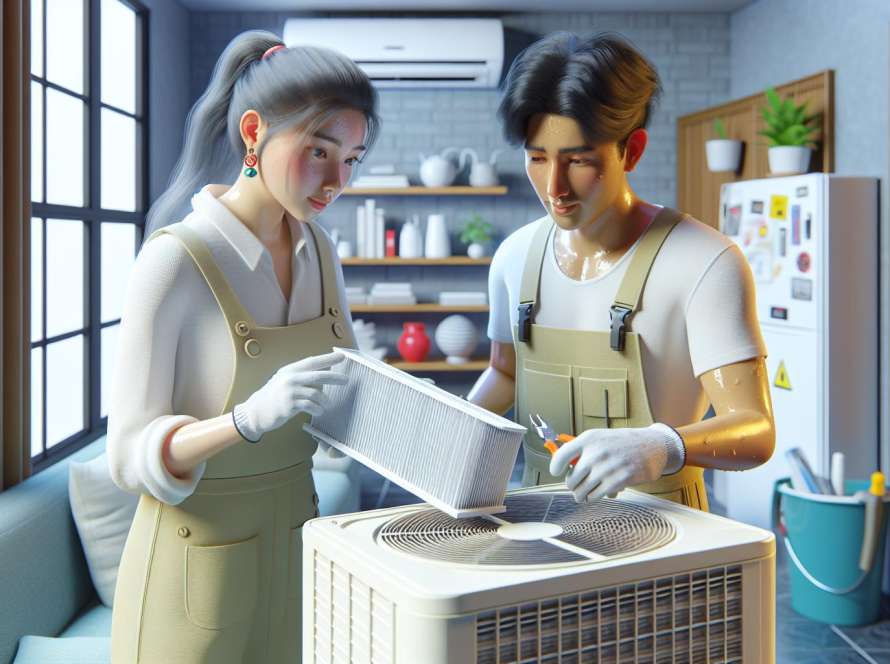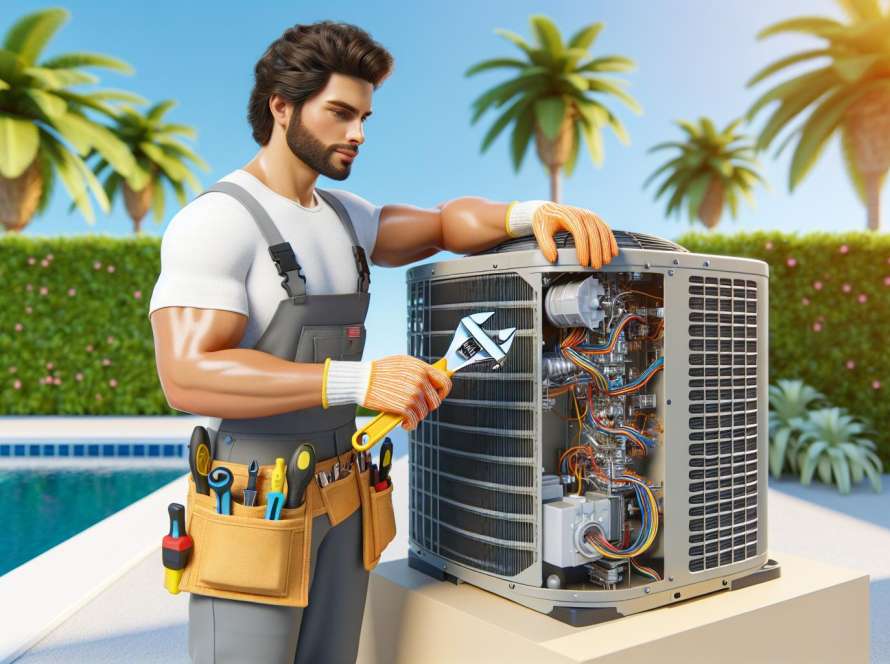So, you’re looking to optimize your AC performance in those scorching hot climates. When it comes to keeping cool, insulation plays a crucial role that often gets overlooked. The right insulation can make a world of difference in maintaining a comfortable indoor temperature while also helping you save on energy bills. Today, we’re diving into the best insulation types that can supercharge your AC efficiency and keep you cool even when the heat is relentless.
When the sun is blazing outside, having the proper insulation is like giving your AC system a power boost. From spray foam to fiberglass to radiant barriers, the options can be overwhelming. But fear not, we’re here to break it down for you. By the end of this article, you’ll have a solid understanding of the best insulation types for hot climates and how they can work in harmony with your AC unit to create the perfect oasis indoors. Let’s get started on transforming your space into a cool and energy-efficient haven.
Why Insulation Matters for AC Performance
Insulation is crucial for optimizing AC performance in hot climates. Let’s delve into why it matters for maintaining a cool and energy-efficient indoor environment.
For Beginners: Understanding the Basics
- Insulation helps prevent heat transfer between the indoors and outdoors.
- Proper insulation ensures consistent indoor temperature, reducing the strain on your AC unit.
- Common insulation types for beginners include fiberglass and foam board.
For Intermediate Users: Enhancing AC Efficiency
- Upgrading insulation can lead to significant energy savings by reducing cooling costs.
- Consider spray foam insulation for improved air sealing and increased efficiency.
- Radiant barriers are effective in reflecting heat away from your home, enhancing cooling.
- Advanced users can opt for blown-in insulation for hard-to-reach areas and irregular spaces.
- Energy-efficient windows complement insulation efforts by minimizing heat gain.
- Utilize a combination of insulation types to maximize AC performance and energy savings.
Insulation is the cornerstone of a well-functioning AC system in hot climates. By understanding its importance and choosing the right type of insulation, we can create a comfortable indoor space while keeping energy costs in check.
Understanding the Impact of Hot Climates on AC Efficiency

In hot climates, air conditioners (AC) work harder to maintain comfortable indoor temperatures, leading to increased energy consumption. The scorching heat outside creates a constant need for cooling indoors, which can put a strain on the AC unit if not properly optimized. Let’s delve into how hot climates affect AC efficiency:
For Beginners: Mastering the Basics:
- Hot climates cause AC units to run longer cycles to cool the space adequately.
- Inefficient insulation can result in heat transfer and decreased AC performance.
- Proper insulation is essential to prevent energy waste and keep indoor temperatures consistent.
For Intermediate Users: Enhancing Your Efficiency
- Consider upgrading insulation to higher R-values for better thermal resistance.
- Energy-efficient windows can complement insulation efforts by reducing heat gain.
- Utilize a combination of insulation types to maximize AC efficiency and energy savings.
- Explore advanced options like spray foam insulation for superior sealing capabilities.
- Radiant barriers can reflect heat away, reducing the load on AC units in hot climates.
- Blown-in insulation offers flexibility in application, ideal for challenging spaces.
Remember, understanding how hot climates impact AC efficiency is the first step towards optimizing your cooling system for maximum performance and energy savings.
Spray Foam Insulation: The Pros and Cons
Grains have a long post-cooking shelf life, but you shouldn’t wait until they become old to get a move on. In the case of rice, there are many ways to turn your leftovers into tomorrow’s side dish or main entree. As arguably the most prominent foodstuff in the world, cuisines across the globe use rice in a multitude of delicious ways.
For Beginners: Getting Started with Spray Foam Insulation
- Pros:
- Excellent insulation properties
- Seals air leaks effectively
- Cons:
- Initial installation cost can be high
- Professional installation may be required
For Intermediate Users: Maximizing Efficiency with Spray Foam
- Pros:
- Significant energy savings over time
- Reduces noise infiltration
- Cons:
- Requires proper ventilation during installation
- May not be suitable for all areas of the home
- Pros:
- Long lifespan with minimal maintenance
- Provides a moisture barrier
- Cons:
- Can be challenging to retrofit in existing homes
- Potential off-gassing during installation
Remember, understanding the specific needs of your home and considering factors like budget, climate, and long-term goals are key when deciding on the best insulation type for your AC performance in hot climates.
Fiberglass Insulation: A Time-Tested Solution
Fiberglass insulation is a time-tested solution that has been around for decades, offering a range of benefits for enhancing AC performance in hot climates. Whether you’re a beginner looking to improve energy efficiency or an expert aiming for advanced insulation solutions, fiberglass has something to offer for everyone.
For Beginners: Getting Started with Fiberglass Insulation
- Affordable and Easy Installation: Fiberglass insulation is cost-effective and can be installed without professional help, making it ideal for beginners on a budget.
- Decent Insulation Properties: While not the most efficient, fiberglass insulation provides a good level of thermal resistance to help keep your home cool in hot climates.
For Intermediate Users: Enhancing Efficiency with Fiberglass
- Consider Upgrading to High-Density Options: Higher density fiberglass insulation can offer better thermal performance, reducing energy consumption and improving AC efficiency.
- Sealing Air Leaks: Proper installation of fiberglass insulation can help seal air leaks, preventing hot air from entering your home and easing the load on your AC system.
- Combining with Vapor Barriers: Experts can take fiberglass insulation to the next level by adding vapor barriers for enhanced moisture control and insulation efficiency.
- Custom Fit Insulation: Tailoring fiberglass insulation to fit specific areas in your home can maximize its effectiveness in maintaining a cool indoor environment.
With its versatility and proven track record, fiberglass insulation remains a reliable choice for optimizing AC performance in hot climates. By understanding the different levels of application, from basic to advanced, you can make the most of this classic insulation solution.
Radiant Barriers: Blocking Heat for Better Cooling

When it comes to enhancing the efficiency of our AC systems in hot climates, radiant barriers play a vital role in blocking heat and improving cooling performance. Let’s dive into practical tips and strategies for utilizing radiant barriers effectively at different experience levels:
For Beginners: Understanding the Basics
- What are radiant barriers? Radiant barriers are materials designed to reflect radiant heat, helping to keep spaces cooler.
- Installation tips: Start by placing radiant barriers in your attic to reduce heat gain through the roof.
- Affordable solutions: Consider using radiant barrier paint or foil-faced insulation for a budget-friendly option.
For Intermediate Users: Enhancing Cooling Efficiency
- Optimizing placement: Ensure that radiant barriers are installed with an air gap to maximize their reflective properties.
- Complementing insulation: Pair radiant barriers with traditional insulation for a comprehensive approach to thermal management.
- Consider reflective roofing: Explore the benefits of reflective roof coatings to further reduce heat absorption.
- Investing in professional installation: Consult with a professional to assess your specific cooling needs and install radiant barriers effectively.
- Advanced applications: Incorporate radiant barriers into walls and floors for comprehensive heat control throughout your space.
- Continuous improvement: Regularly inspect and maintain radiant barriers to ensure long-term effectiveness in blocking heat.
By incorporating radiant barriers into our insulation strategies, we can achieve significant improvements in AC performance and energy efficiency, particularly in hot climates. Experiment with different configurations and combinations to find the optimal solution for your cooling needs.
Conclusion
Incorporating radiant barriers into our insulation plans can significantly boost AC performance in hot climates. By blocking heat and enhancing cooling efficiency, radiant barriers offer a practical solution for improving energy efficiency. Whether we’re beginners, intermediate users, or advanced in insulation strategies, optimizing the placement of radiant barriers can lead to substantial benefits. From installing in the attic to considering professional installation, there are various options to explore. By integrating radiant barriers alongside traditional insulation methods, we can achieve a more comfortable indoor environment while reducing energy consumption. In hot climates, where AC usage is high, leveraging radiant barriers can make a noticeable difference in maintaining a cool and cost-effective home.

